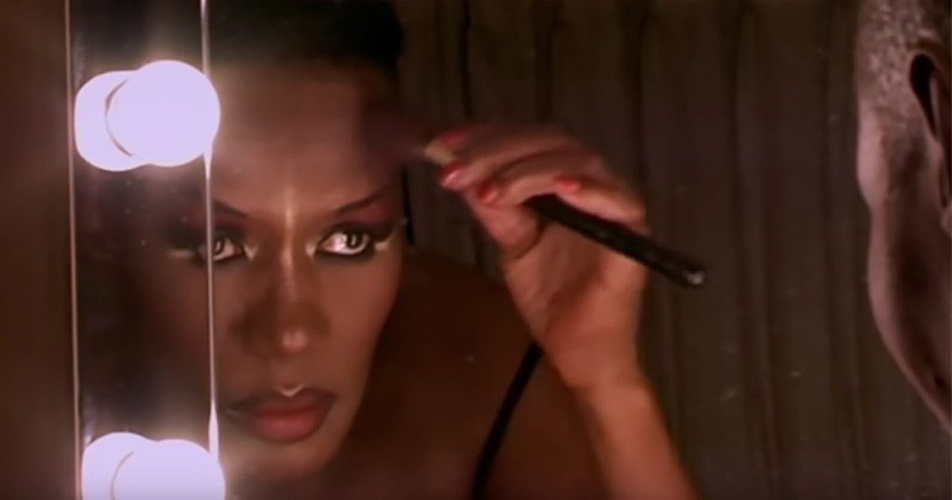Review: Grace Jones: Bloodlight and Bami
Film Reviews
Grace Jones: Bloodlight and Bami
Director: Sophie Fiennes
Blinder Films
In Theaters: 05.04
This is not a documentary with interviews, talking heads or voiceovers meant to tightly elucidate Grace Jones’ career. Bloodlight and Bami pulls the curtain back and gives us the fly-on-the-wall cinema verité approach—this is Jones in the studio, angrily calling Robbie about getting the runaround on logistics; Jones eating dinner with her family and talking bloodlines; Jones cracking open an oyster, saying, “This muscle is so tight … wish my pussy were this tight!” This is a portrait of the artist as identity.
“I hope this set is not tacky. Otherwise I’ll just have to say ‘fuck it’ and bite the bullet. This is paying for my record,” Jones says, preparing for a rehearsal of “La Vie en Rose.” The audience is a mix of white and black families, the older generation buzzed at Jones’ presence while the younger are bemused or half-paying attention. She performs, decades of experience on display. After the rehearsal, Jones returns to her dressing room and works on her makeup when she’s prodded by a male producer for her thoughts on the set and design: “If I’d known in advance the set would be like that … I’m like a madam in a whorehouse!” He pushes back: The set is dreamy and gorgeous, he says. He’s cooked up this aesthetic based on his perception of Jones. The people will love it! “I’m talking about what I stand for,” Jones says, wandering around her room. “You understand, the contrast … It’s like I’m in a bad dream. I’m never like this! This is crazy!”
Bloodlight and Bami balances Jones’ portrait delicately. Jones isn’t entirely uncompromising, but like most artists, she has a vision that she believes in and for which she will put up an ugly fight. “I’m giving you guys more than you deserve,” she says to Robbie at one point. She’s not obnoxious about it, just plain. Her work requires her collaborators to rise to her vision. Her insistence on doing her own makeup speaks to this. Jones will control what she can because this is who she is. She is the artist.
Directed by Sophie Fiennes, the film feels like a seamless collaboration between actor and producer. Fiennes merely gave us a well-composed window, but it’s no accident that she’s the one to do it. Jones and Fiennes met around 2002 for a screening of Fiennes’ Hoover Street Revival. Around 2008, Jones agreed to do a film. However, she was more interested in doing something unique. In collaborating with Fiennes, he initiated the project. While Jones would be Jones, Fiennes would film and compose the structure. The result shows Jones’ ability to be herself in a way that contrasts her struggle with male producers.
The film’s scenes are often punctuated by footage of performances and shots of Jamaica, Jones’ country of origin. Bloodlight lingers on the importance of Jones’ roots by constantly referencing it, returning to simple shots of Jones relaxing in the streets, an open fire being poked and prodded, and shots of the skyline and the cherry Jamaican sun setting. At one point, Jones takes her sister back home since she lacks the memories of her youth there. For all the importance of Jones’ visual style, her androgyny and contributions to drag and queer culture—her ’80s influence, her reputation as a bold, black woman in disco—Jamaica may be the most obviated facet of Jones. That is rectified here, as bouts with her producers, her travel debacles and family dinners are all bookended by the country, and the whir and rumble of rivers and cities.
I didn’t come away with a chronological knowledge of Jones’ career or the ins and outs of her modern stardom. I watched Bloodlight and Bami and felt Jones’ energy. One scene shows her in a club somewhere, dancing in a happy maelstrom of light and color. An overwhelming sound drowns out Jones’ voice as she eyes the camera and shouts something to it. I have no idea what she said, but I felt it. –Parker Scott Mortensen
